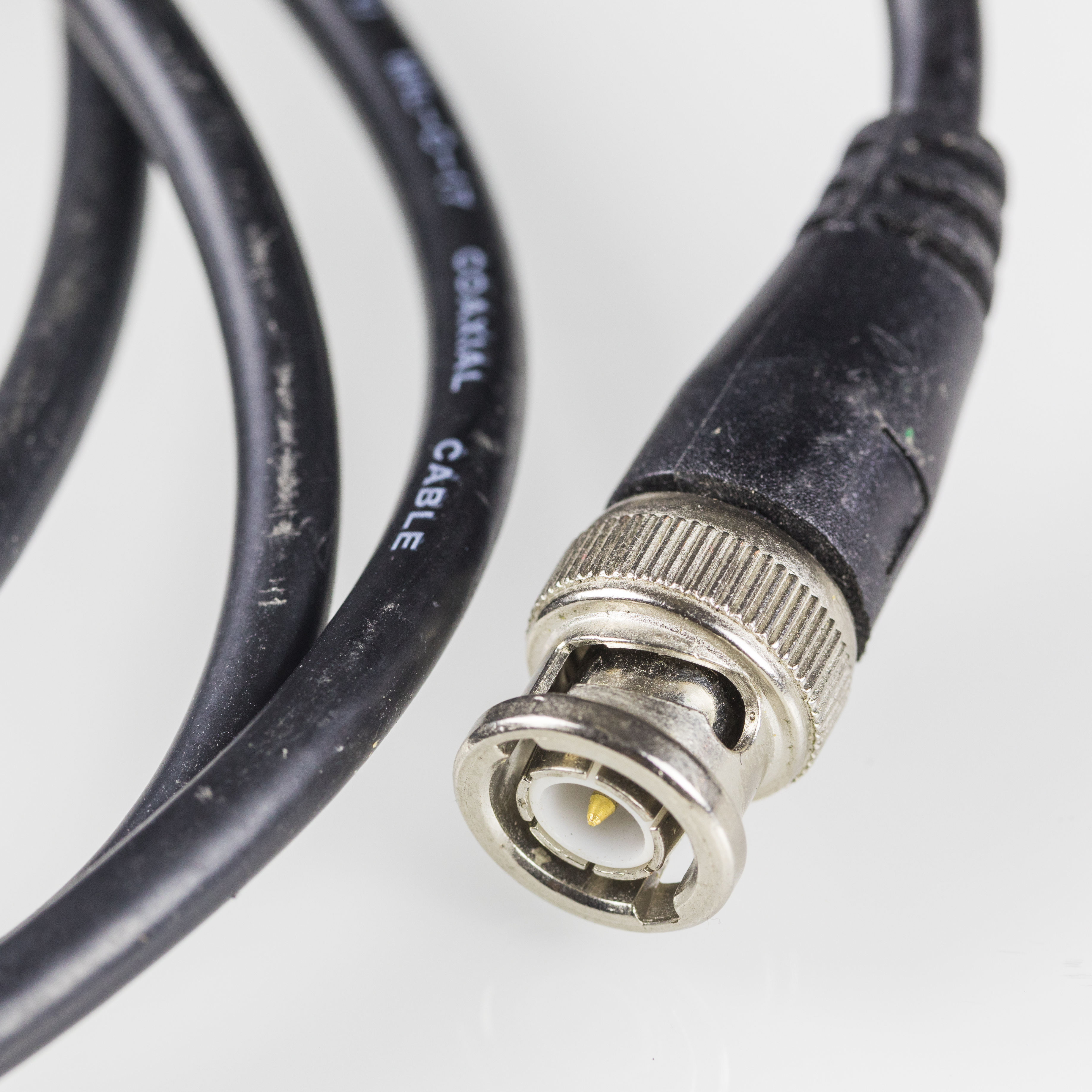|
802.3
IEEE 802.3 is a working group and a collection of standards defining the physical layer and data link layer's media access control (MAC) of wired Ethernet. The standards are produced by the working group of the Institute of Electrical and Electronics Engineers (IEEE). This set of standards generally applies to local area networks (LANs) and has some wide area network (WAN) applications. Physical connections are made between network nodes and, usually, various network infrastructure devices ( hubs, switches, routers) by various types of copper cables or optical fiber. 802.3 standards support the IEEE 802.1 network architecture. 802.3 also defines a LAN access method using carrier-sense multiple access with collision detection (CSMA/CD). Communication standards See also * IEEE 802 * IEEE 802.11, a set of wireless networking standards * IEEE 802.16, a set of WiMAX standards * IEEE Standards Association The Institute of Electrical and Electronics Engineers Standards Assoc ... [...More Info...] [...Related Items...] OR: [Wikipedia] [Google] [Baidu] |
Ethernet
Ethernet ( ) is a family of wired computer networking technologies commonly used in local area networks (LAN), metropolitan area networks (MAN) and wide area networks (WAN). It was commercially introduced in 1980 and first standardized in 1983 as IEEE 802.3. Ethernet has since been refined to support higher bit rates, a greater number of nodes, and longer link distances, but retains much backward compatibility. Over time, Ethernet has largely replaced competing wired LAN technologies such as Token Ring, FDDI and ARCNET. The original 10BASE5 Ethernet uses a thick coaxial cable as a shared medium. This was largely superseded by 10BASE2, which used a thinner and more flexible cable that was both less expensive and easier to use. More modern Ethernet variants use Ethernet over twisted pair, twisted pair and fiber optic links in conjunction with Network switch, switches. Over the course of its history, Ethernet data transfer rates have been increased from the original to the lates ... [...More Info...] [...Related Items...] OR: [Wikipedia] [Google] [Baidu] |
StarLAN
StarLAN was the first IEEE 802.3 standard for Ethernet over twisted pair wiring. It was standardized by the IEEE Standards Association as 802.3e in 1986, as the 1BASE5 version of Ethernet. The StarLAN Task Force was chaired by Bob Galin. Description An early version of StarLAN was developed by Tim Rock and Bill Aranguren at AT&T Information Systems as an experimental system in 1983. The name StarLAN was coined by the IEEE task force based on the fact that it used a star topology from a central hub in contrast to the bus network of the shared cable 10BASE5 and 10BASE2 networks that had been based on ALOHAnet. The standard known as 1BASE5 was adopted as 802.3e in 1986 by members of the IEEE 802.3 standards committee as the Twisted Pair Medium Access Control sublayer and Physical Signalling sublayer specification in section 12. The original StarLAN ran at a speed of 1 Mbit/s. A major design goal in StarLAN was reduction in Ethernet installation costs by the reuse of existin ... [...More Info...] [...Related Items...] OR: [Wikipedia] [Google] [Baidu] |
10BASE-F
The early generation of Ethernet standards had a maximum throughput of . In 10BASE-X, the 10 represents its maximum throughput of , BASE indicates its use of baseband transmission, and X indicates the type of medium used. Classic Ethernet includes coax, twisted pair and optical variants. The first Ethernet standard was published in 1983 and classic Ethernet operating at was the dominant form of Ethernet until the first standard for Fast Ethernet was approved in 1995. Varieties Fibre-based standards (10BASE-F) ''10BASE-F'', or sometimes ''10BASE-FX'', is a generic term for the family of 10 Mbit/s Ethernet standards using fiber-optic cable. In 10BASE-F, the 10 represents a maximum throughput of 10 Mbit/s, BASE indicates its use of baseband transmission, and F indicates that it relies on a medium of fiber-optic cable. The technical standard requires two strands of 62.5/125 μm multimode fiber. One strand is used for data transmission while the other is used for ... [...More Info...] [...Related Items...] OR: [Wikipedia] [Google] [Baidu] |
Ethernet Hub
An Ethernet hub, active hub, network hub, repeater hub, multiport repeater, or simply hub is a network hardware device for connecting multiple Ethernet devices together and making them act as a single network segment. It has multiple input/output (I/O) ports, in which a signal introduced at the input of any Computer port (hardware), port appears at the output of every port except the original incoming. A hub works at the physical layer. A repeater hub also participates in collision detection, forwarding a jam signal to all ports if it detects a collision (telecommunications), collision. In addition to standard 8P8C ("RJ45") ports, some hubs may also come with a BNC connector, BNC or an Attachment Unit Interface (AUI) connector to allow connection to legacy 10BASE2 or 10BASE5 network segments. Hubs are now largely obsolete, having been replaced by network switches except in very old installations or #Uses, specialized applications. As of 2011, connecting network segments by repe ... [...More Info...] [...Related Items...] OR: [Wikipedia] [Google] [Baidu] |
10BROAD36
10BROAD36 is an obsolete computer network standard in the Ethernet family. It was developed during the 1980s and specified in IEEE 802.3b-1985. The Institute of Electrical and Electronics Engineers standards committee IEEE 802 published the standard that was ratified in 1985 as an additional section 11 to the base Ethernet standard. It was also issued as ISO/IEC 8802-3 in 1989. The standard supports 10 Mbit/s Ethernet signals over standard 75 ohm cable television (CATV) cable over a 3600-meter range. 10BROAD36 modulates its data onto a higher frequency carrier signal, much as an audio signal would modulate a carrier signal to be transmitted in a radio station. In telecommunications engineering, this is a broadband signaling technique. Broadband provides several advantages over the baseband signal used, for instance in 10BASE5. Range is greatly extended (, versus for 10BASE5), and multiple signals can be carried on the same cable. 10BROAD36 can even share a cable with s ... [...More Info...] [...Related Items...] OR: [Wikipedia] [Google] [Baidu] |
IEEE 802
IEEE 802 is a family of Institute of Electrical and Electronics Engineers (IEEE) standards for local area networks (LANs), personal area networks (PANs), and metropolitan area networks (MANs). The IEEE 802 LAN/MAN Standards Committee (LMSC) maintains these standards. The IEEE 802 family of standards has had twenty-four members, numbered 802.1 through 802.24, with a working group of the LMSC devoted to each. However, not all of these working groups are currently active. The IEEE 802 standards are restricted to computer networks carrying variable-size packets, unlike cell relay networks, for example, in which data is transmitted in short, uniformly sized units called cells. Isochronous signal networks, in which data is transmitted as a steady stream of octet (computing), octets, or groups of octets, at regular time intervals, are also outside the scope of the IEEE 802 standards. The number 802 has no significance: it was simply the next number in the sequence that the IEEE used fo ... [...More Info...] [...Related Items...] OR: [Wikipedia] [Google] [Baidu] |
Media Access Control
In IEEE 802 LAN/MAN standards, the medium access control (MAC), also called media access control, is the layer that controls the hardware responsible for interaction with the wired (electrical or optical) or wireless transmission medium. The MAC sublayer and the logical link control (LLC) sublayer together make up the data link layer. The LLC provides flow control and multiplexing for the logical link (i.e. EtherType, 802.1Q VLAN tag etc), while the MAC provides flow control and multiplexing for the transmission medium. These two sublayers together correspond to layer 2 of the OSI model. For compatibility reasons, LLC is optional for implementations of IEEE 802.3 (the frames are then "raw"), but compulsory for implementations of other IEEE 802 physical layer standards. Within the hierarchy of the OSI model and IEEE 802 standards, the MAC sublayer provides a control abstraction of the physical layer such that the complexities of physical link control are invisible to ... [...More Info...] [...Related Items...] OR: [Wikipedia] [Google] [Baidu] |
10BASE2
10BASE2 (also known as cheapernet, thin Ethernet, thinnet, and thinwire) is a variant of Ethernet that uses thin coaxial cable terminated with BNC connectors to build a local area network. During the mid to late 1980s, this was the dominant Ethernet standard. The use of twisted pair networks competed with 10BASE2's use of a single coaxial cable. In 1988, Ethernet over twisted pair was introduced, running at the same speed of 10 Mbit/s. In 1995, the Fast Ethernet standard upgraded the speed to 100 Mbit/s, and no such speed improvement was ever made for thinnet. By 2001, prices for Fast Ethernet cards had fallen to under $50. By 2003, Wi-Fi networking equipment was widely available and affordable. Due to the immense demand for high-speed networking, the low cost of Category 5 cable, and the popularity of 802.11 wireless networks, both 10BASE2 and 10BASE5 have become increasingly obsolete, though devices still exist in some locations. As of 2011, IEEE 802.3 has ... [...More Info...] [...Related Items...] OR: [Wikipedia] [Google] [Baidu] |
10BASE5
10BASE5 (also known as thick Ethernet or thicknet) was the first commercially available variant of Ethernet. The technology was standardized in 1982 as IEEE 802.3. 10BASE5 uses a thick and stiff coaxial cable up to in length. Up to 100 stations can be connected to the cable using vampire taps and share a single collision domain with 10 Mbit/s of bandwidth shared among them. The system is difficult to install and maintain. 10BASE5 was superseded by much cheaper and more convenient alternatives: first by 10BASE2 based on a thinner coaxial cable (1985), and then, once Ethernet over twisted pair was developed, by 10BASE-T (1990) and its successors 100BASE-TX and 1000BASE-T. In 2003, the IEEE 802.3 working group deprecated 10BASE5 for new installations. Name origination The name ''10BASE5'' is derived from several characteristics of the physical medium. The ''10'' refers to its transmission speed of 10 Mbit/s. The ''BASE'' is short for baseband signaling (as ... [...More Info...] [...Related Items...] OR: [Wikipedia] [Google] [Baidu] |
Working Group
A working group is a group of experts working together to achieve specified goals. Such groups are domain-specific and focus on discussion or activity around a specific subject area. The term can sometimes refer to an interdisciplinary collaboration of researchers, often from more than one organization, working on new activities that would be difficult to sustain under traditional funding mechanisms (e.g., federal agencies). Working groups are variously also called task groups, workgroups, technical advisory groups, working parties, or task forces. The lifespan of a working group can last anywhere between a few months and several years. Such groups have the tendency to develop a ''quasi-permanent existence'' when the assigned task is accomplished; hence the need to disband (or phase out) the working group when it has achieved its goal(s). A working group's performance is made up of the individual results of all its individual members. A team's performance is made up of both i ... [...More Info...] [...Related Items...] OR: [Wikipedia] [Google] [Baidu] |


